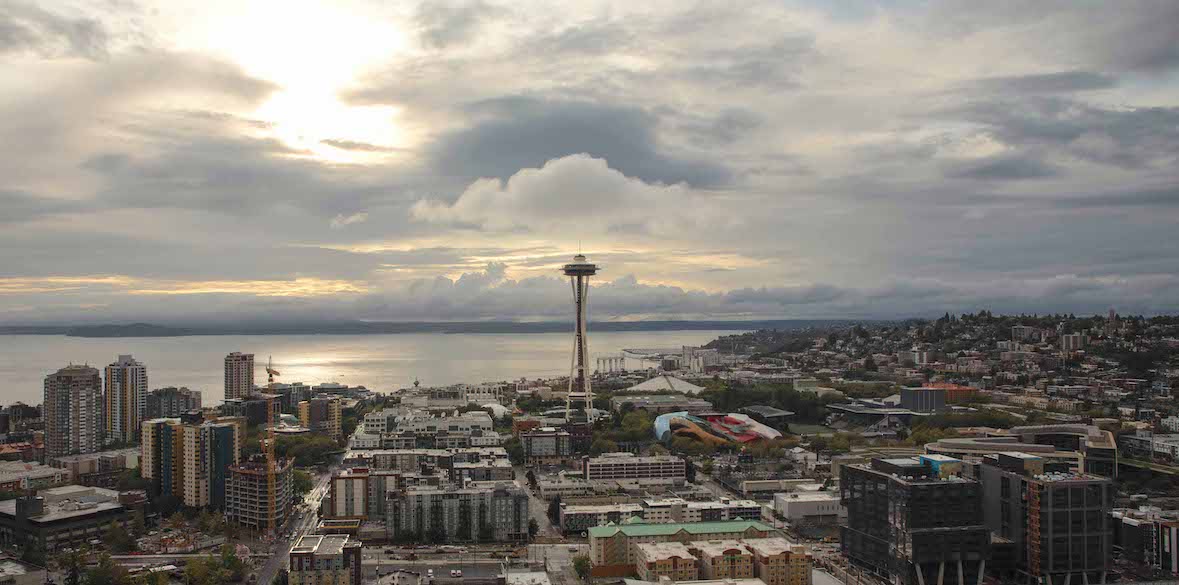INSIGHTS FROM THE 2019 AFIRE ANNUAL MEMBERSHIP MEETING
You never change things by fighting the existing reality. To change something, build a new model that makes the existing model obsolete.
R. Buckminster Fuller
A futurist of the mid-20th Century, Buckminster Fuller observed a world a generation ago that was changing dramatically because of technology, politics, design, and global media. That change didn’t stop. In the last couple of decades, it seems to have only accelerated, to the point that disruptive change may even be a “new normal.” Mr. Fuller’s observations continue to be useful guides, perhaps even more than they were a generation ago. Change cannot be stopped – but it can be embraced, navigated, and even championed.
In this way, Seattle, Washington – home to some of the biggest and most innovative companies in the world – provided a picturesque backdrop for a 21st Century discussion during the AFIRE 2019 Annual Membership Meeting about the promises and perils of change for international real estate investors.
“Change is difficult in part because we are afraid to give up what we already have – even if what we have is less than optimal,” said Gunnar Branson, CEO of AFIRE. “And paradoxically, the more we fight against change, the more we are likely to lose. Perhaps, we should consider creating new models for ourselves as Mr. Fuller suggested. Instead of being the inevitable victims of disruptive change, we could lead the way to a better future.”
—
THE POLITICS OF CHANGE
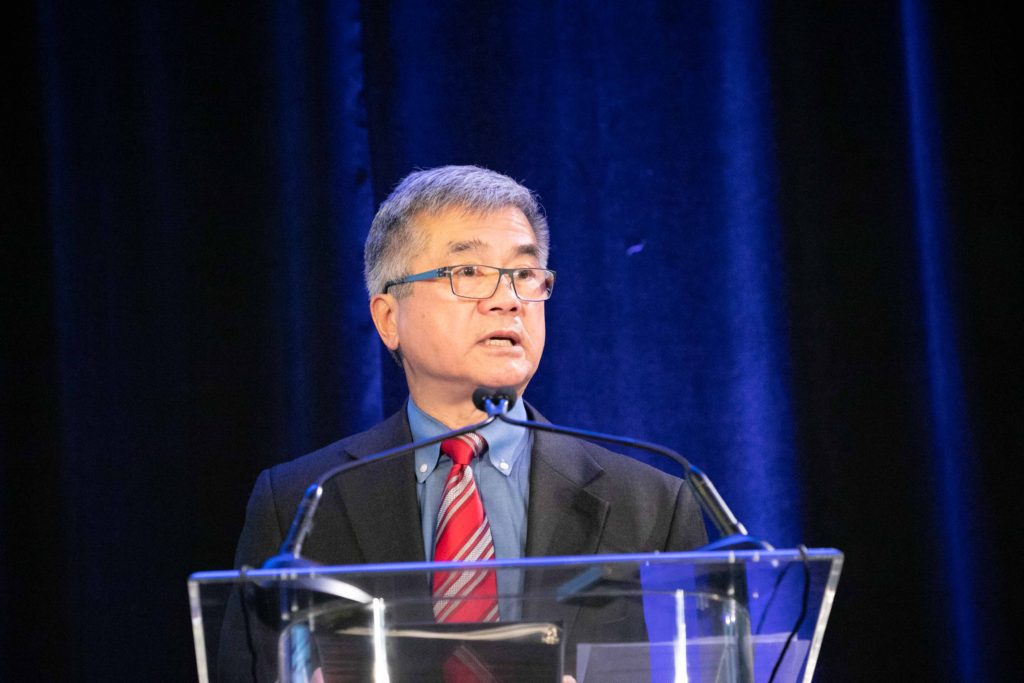
As much as integrity and humility are essential for personal change, so too are collaboration and diplomacy for the politics of change, as evidenced by the mounting tensions between the US and China. The evolution of this relationship, said Gary Locke, former Governor of Washington and US ambassador to China, will frame future pathways for change between cities, industries, and countries.
“As the US-China relationship goes, so does much of the world,” Locke said. “Obviously, real estate is impacted by the economy, and certainly these are very tumultuous times for the world economy, which is heavily influenced by the US-China relationship – perhaps the most consequential two-country bilateral relationship in the world today.”
As a third-generation Chinese American, raised in Seattle’s public housing, Locke offered a personal view of the roots of the current conflicts between the US and China. “When President Nixon first visited China nearly 50 years ago, it would’ve been difficult to imagine how a very simple society would so dramatically transform itself into the modern China of today,” Locke said. “The bicycles and the hutong alleys that characterized China even 25 years ago have given way to Audis, elevated freeways, and the world’s largest network of high-speed bullet trains.”
China’s economic transformations over the past 20 years also underscore a deeper transformation in Chinese culture. China has more ultra-wealthy individuals than the US, followed by a rising and powerful urban middle-class. Its upper-middle classes currently constitute around 14% of China’s urban households. Additionally, more than half of the country’s population lives in cities, compared to only 25% in the mid-1900s, and these numbers are expected to increase to nearly 70% by 2040.
“Against this backdrop of dramatic social and economic transformation in China, both China and the US find themselves in an intractable trade war,” Locke said. “In a trade war, there are no winners, only losers.”
While the trade war between China and the US is still playing out, Locke cited some more diplomatic precedents that support better reciprocity between the two countries. For example, respected economists and policy leaders have advocated for investment restrictions rather than tariffs. Some major, US-based technology companies are required to work with Chinese partners in order to offer cloud computing services in China. This relationship can go two ways, without the negative consumer impacts of tariff escalations. When asked about a silver lining to the otherwise cloudy US-China outlook, Locke returned to the virtues of collaboration.
“The Chinese people have a love affair with all things America. We need to make sure that this is a dispute between the governments of the United States and China,” Locke said. “The more that people around the world can witness the incredible vitality, energy, drive, innovation, and diversity that we have in America, the more that perhaps they will want the same.”
INNOVATION CREATES A VIRTUOUS CYCLE – BUT YOU NEED TO SEE IT, FIRST
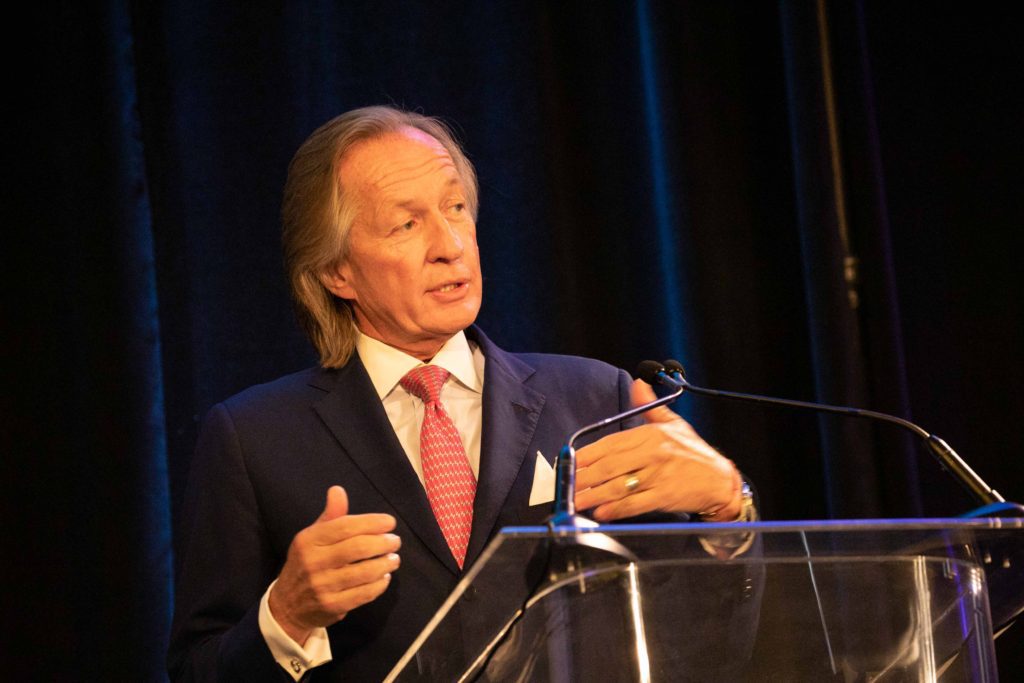
The same vitality and energy contained in Locke’s positive view of US culture are also at the core of America’s innovation centers; those regional urban economies powered by disruptive, technology-driven industries.
“Technology has flattened the world, and at the end of the day, technology has transformed how information is shared, and how capital is flowing,” said Roy March, CEO of Eastdil Secured. “Innovation creates and defines opportunity. As more traditional industries advance new technologies, they’re disrupting how the world works while creating a virtuous cycle of growth and reinvestment.”
Innovation centers all share certain core characteristics to make this cycle possible. Regions with top universities attract top talent, producing an educated population focused on generating innovative ideas across industries. Bold ideas produced within these ecosystems, as in Seattle over the past two decades, tend to attract high-risk capital and create new businesses. “These linkages generate an opportunity to cluster around these ideas,” March said. “As the cluster grows, the leverage is elevated, the benefits are elevated, and the cycle feeds upon itself.”
In his presentation on disruption in capital markets, Mark Gibson, CEO of Capital Markets, Americas, for JLL, echoed March’s analysis of innovation centers and, specifically, their impact on liquidity and how investors are deciding on where to invest. “There is significant liquidity coming into non-major markets in the US, because there is significant thinking behind what makes an innovation center, and determining where they are going to emerge,” Gibson said.
Typically, large credit rating organizations such as Moody’s observe an orthodox view of what constitutes a major market – including cities such as New York and Los Angeles. “However, there’s a lot going on outside of six markets in the US, and it’s beginning to shift the investor appetite to otherwise non-major markets,” Gibson said, adding that the shift is being primarily driven by job growth. “If you take a look at who is gaining jobs over time, and what industries are generating those jobs, you will see what’s driving investor demand.”
This enhanced focus on job creation, integral to the virtuous cycle of innovation centers, is ultimately changing how the industry defines gateway markets. While an urban environment supports the vitality of established and emergent innovation centers, such environments can also potentially be created by turning inward-facing corporate headquarters inside out and exploring new uses and programs that fit changing attitudes.
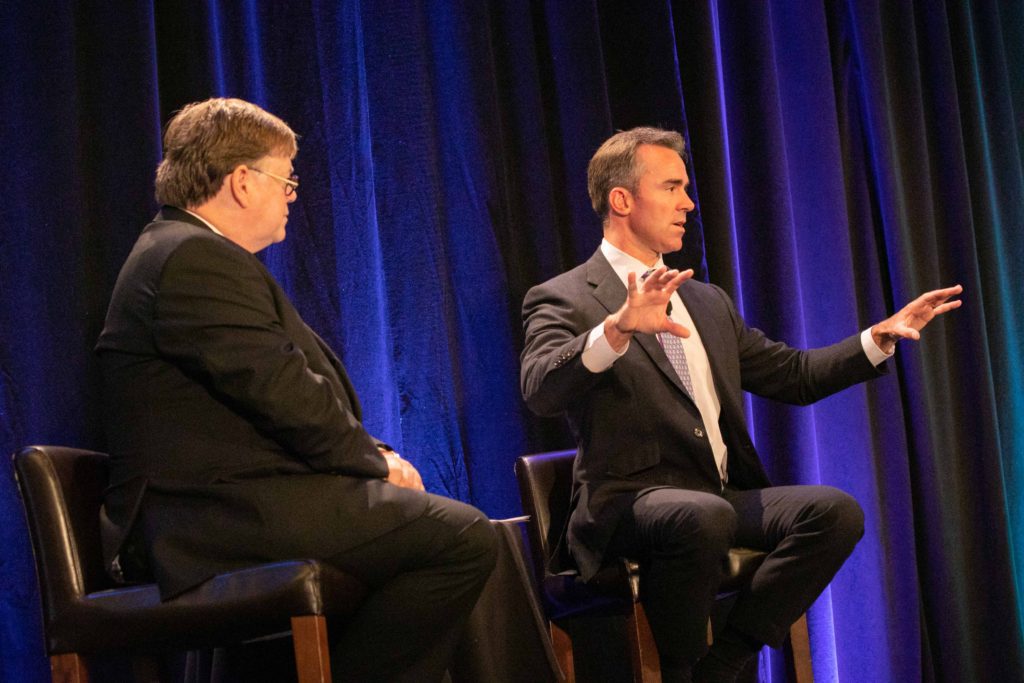
Gathering data-driven insights about changing attitudes and trends are an essential strategy for Blackstone, as discussed by Tyler Henritze, Senior Managing Director and Head of US Acquisitions for the firm’s real estate group. “What we are really are trying to do is take advantage of our scale in every way possible, and leverage the data and information gleaned from our global real estate holdings to generate outsized returns,” Henritze said. “We try to identify global shifts – whether it be technology or demographics or capital flows – and try to get in front of those trends.”
Diversification for its own sake is not a surefire strategy for generating returns, Henritze said. Using the available data from Blackstone’s own holdings, paired with marketplace insights gleaned from the firm’s relationships, he advocates for an approach that strategically identifies what cities, and what asset classes, are benefitting from broader technological and demographic shifts. Emergent sectors, which reflect these broader shifts, include life sciences, multifamily housing, and industrial and logistics. Customers in these areas, especially the latter, increasingly require urban immediacy, as well as more integrated service capabilities. It’s common for industrial sites to now offer packaging, freighting, robotics capabilities, and even retail capabilities out of single buildings. The important question to ask for such assets, Henritze said, is, “What are you really selling? What is your customer paying for? Sometimes people make the mistake thinking that what they’re selling is just a box. Customers and tenants are asking for more.”
While real estate investors are not able to control the ups and downs of the economy, a dose of out-of-the-box thinking can go a long way as they strive to make investments that are both financially and socially sound.
THE FUTURE IS HAPPENING RIGHT NOW
The idea of making the world a better place through responsible real estate investments and developments sits at the heart of environmental, social, and governance (ESG) efforts. Making the right decisions is becoming non-negotiable in today’s business world.
When it comes to answering this critical question, Prologis, a multinational logistics REIT headquartered in San Francisco, California, is already experimenting with innovative, future-focused solutions.
“For an industry that has been very stable, change is upon us,” said Elizabeth Dunn, Vice President of Global Customer Solutions for Prologis. “We need to see how the industry is adapting and understand the two distinct roads you can take for disruption. On one road, you can try to fight disruption. The other road is to embrace that change and work to be part of the solution.”
Prologis is exploring such solutions by developing multi-story, close-in industrial facilities in US cities, including Brooklyn, the Bay Area, and Seattle, which is home to the company’s new, three-story, 590,000-square-foot Georgetown Crossroads. Prologis sees the project as a way to illustrate how logistics providers and industrial site owners can adapt to emergent customer demands.
“Most consumers live in these dense, urban areas,” Dunn said. “We are meeting this demand by systematically going through these cities and procuring sites and buildings that can be redeveloped into real estate for the ‘last mile’ – the final, critical step in the e-commerce supply chain that can be difficult to replicate.”
Major demand drivers for last-mile facilities include e-commerce, which extends supply chains closer to end consumers; higher service expectations and the pressure to improve supply chains to form a competitive advantage; and cost optimization through the integration of real estate, transportation, and labor.
Industrial real estate decisions must also account for the physical, operational, and cultural disruptions of robotics, automation, machine learning, and artificial intelligence (AI), Dunn said. And according to Frank Chang and Heather Redman, both partners at Flying Fish Ventures, a Seattle-based VC firm, AI represents the next “massive” wave in technological evolution.
“The Industrial Revolution had this transformative impact on how we work, and we can think about the Information Revolution the same way,” Redman said. “Now that we’re well into the latter stages of that revolution, many experts are already looking at what will be the impacts of the AI Revolution. Take the amount of productivity unleashed by the Industrial Revolution, then multiply that by four. That’s what we are going to see with AI.”
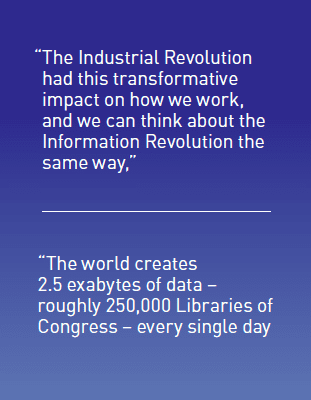
Chang and Redman outlined three key areas where the impact of AI will be most profound. The first, which Redman called the domain of “insights,” concerns what categories of information can be extrapolated from massive data sets. AI is already used for detecting insights from population, public health, and scientific data, but will increasingly extend into industry data, particularly within the data supply chain at all phases of real estate, from building management data to financing.
AI also promises to have profound impacts on automation. While robots and drones can be programmed to follow certain rule sets, or learn within specified parameters (i.e. machine learning), AI can begin with “simple tasks, and through computer vision and natural language understanding, AI will eventually be able to automate those hard and soft tasks,” Redman said.
Finally, AI will become increasingly personal. Just as computers can mimic and improve certain physical tasks, AI can learn and study human behavior, and be used for everything from marketing and customer service to security and transportation.
“When you look across industries, especially commercial real estate, you can already identify places where you’d want better insights based on all of your legacy data, as well as the new data that you’re acquiring every day,” Redman said. “AI could generate insights to help you automate many tasks, personalize your marketing, and enhance your understanding of a real estate market and make more informed decisions about an investment.”
Of course, AI capabilities are only as effective as the data upon which they’re built. “The world creates 2.5 exabytes of data – roughly 250,000 Libraries of Congress – every single day,” Chang said. “We couldn’t possibly hope to process that using traditional methods. There are tons of insights and additional revenue streams living out there in all of your real estate assets all over the world. AI and machine learning are how we can unlock this potential.”
While AI represents a universe of data-driven opportunities, Chang and Redman also advocated for a studied approach to technological progress; one that doesn’t sacrifice privacy, security, or individual agency merely for the sake of progress. Innovation, particularly in the real estate investment industry, reaches its highest potential when it’s advanced inclusively and responsibly.
TRANSFORMATION THROUGH INCLUSION, COLLABORATION, AND CULTURAL CHANGE
“Our inclusive development philosophy is based around three core ideas: active stakeholder engagement, public art and preservation, and environmental sustainability,” said Ada Healey, Chief Real Estate Officer for Vulcan Real Estate, in discussing her firm’s approach to transforming Seattle’s South Lake Union (SLU) neighborhood from urban blight to a vibrant, tech-driven downtown community.
SLU is one of the largest urban redevelopment projects in the country, and for Healey and Vulcan Real Estate, such a massive neighborhood reimagination would not have been possible without community buy-in. “These were goals that the city and the majority of the stakeholders embraced, which is why we were able to generate so much community support,” Healey said. “We wanted SLU to be an economic engine, so our goal was to create thousands of jobs and millions of dollars in tax revenue. We also wanted a mixed-use neighborhood, active at nights, on weekends, and during the workday.”
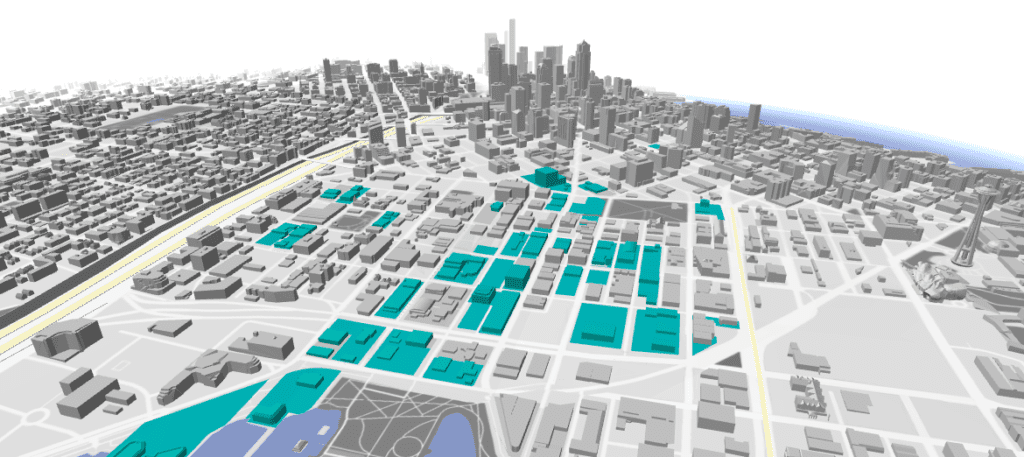
To achieve these economic goals, Vulcan partnered with the City of Seattle on the first phase of the Seattle Streetcar, and also worked with local artists and community groups to design SLU’s street-level experience, including public art installations and the preservation of five historic buildings. These goals appealed to a broad group of stakeholders, whose support enabled Vulcan to advance its boldest master planning initiatives. “We were willing to take risks, and we were persistent,” Healey said.
As with SLU, transformative, large-scale development projects can only happen if their champions share a set of core values that go beyond pure bottom-line thinking and integrate social and environmental priorities. Similarly, large-scale change within the real estate industry necessitates corporate self-awareness and a willingness to embrace change, as emphasized by Constance Freedman, Founder and Managing Partner of Moderne Ventures, in her keynote address.
“We are responsible for how people work, live, and play,” Freedman said. “We’re responsible for managing the assets that people touch every single day, and because of that, I truly believe we can change the world.”
When advocating for change in the real estate industry, Freedman said, it’s not just about planning for incremental change; it’s about planning for seismic shifts, including emerging technologies, new business models, and new sources of capital – all of which pose transformative promises and inevitable risks. However, fostering a culture agile enough to plan for such seismic change can also enable adjacent revenue options – similar to how Apple has built a full technology ecosystem, compared to Dell’s focus on hardware – while building a foundation conducive to continuous invention and innovation.
“It’s absolutely essential to think strategically how to build technology, and explore new ideas and opportunities, and understand that it can be uncomfortable to think about these things,” Freedman said. “We first need to recognize that life is changing, technology is changing, and we can make it happen for us, or it can happen to us. Then we need to something about it, measure it, understand it and build it into our organizations and our culture.”
WHAT’S NEXT?
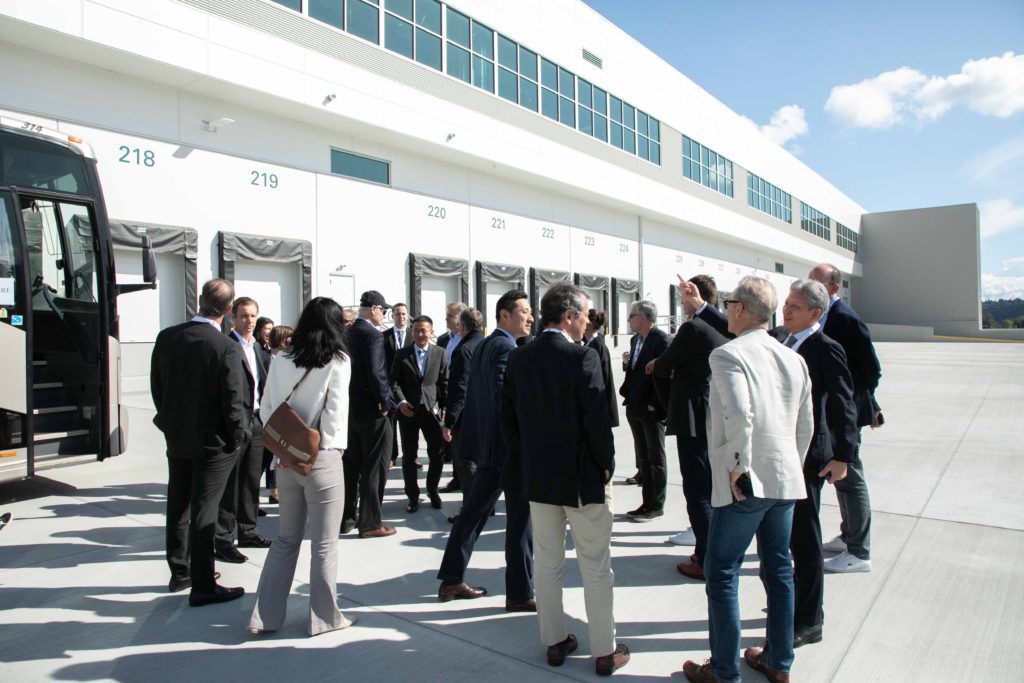
Freedman’s message underscored the imperative set by AFIRE’s new chairman Martin Brühl, Chief Investment Officer for Union Investment Real Estate, as he spoke to the responsibilities to be shouldered by AFIRE members and real estate industries for the coming year.
By accounting for change at all levels – environmental, political, and financial – leaders in this industry can have an impact, Brühl said. “We can be the voice of responsible investment in real estate. We can lead by example. We can show thought leadership. We can improve the occasionally questionable reputation of the real estate industry. We can demonstrate that we are true fiduciaries to our investors, and to the built environment as a whole,” Brühl said.
Across innovation centers, emerging technologies, socially responsible development, and evolving international relations, to fight the existing reality is to tilt at windmills. To paraphrase Fuller, the priority for the responsible real estate investor, is to explore new ideas and embrace a new way of doing things.
QUESTIONS? CONTACT US.


